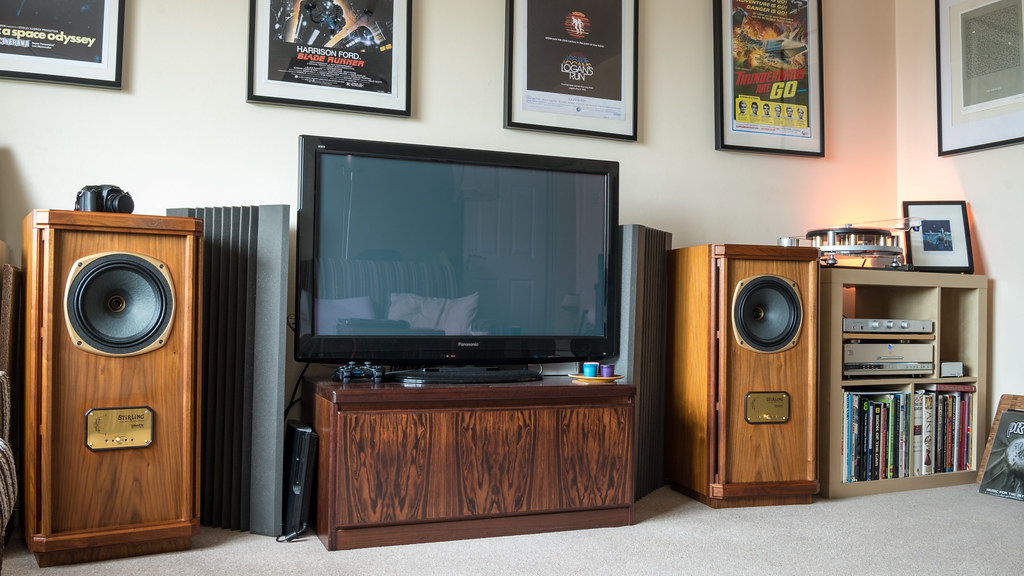Hoopsontoast
pfm Member
Finally got round to setting up a measurement system, I had planned to do the Rega R9s but did not get round to it before they went out on loan.
Method:
Mic- MiniDSP UMIK-1 via USB (With Calibration File)
Software - REW on Dell E6220 Laptop
DAC - USB to Phono via Behringer UCA-202
Amplifier - Bryston B60
Speakers - Tannoy Stirling HE
The room:

System by RSdesignUK, on Flickr
First measurements taken at the Listening Position on a sofa just under 3m from the speakers.
Right and Left Plots for the Tannoys at the Listening position. The bass certainly does not sound as pronounced as you would imagine looking at the plots.
 Tannoy @ Listening (R + L) by RSdesignUK, on Flickr
Tannoy @ Listening (R + L) by RSdesignUK, on Flickr
Distortion Plot

Tannoy @ Listening (R) Distortion by RSdesignUK, on Flickr
And interestingly, plot showing before and after the foam absorbers, subjectively sounds tighter with them in. (Green -With / Red - Without)
The Group Delay plot is smoother by around 20ms average though.

Tannoy @ Listening (R) With and Without Foam by RSdesignUK, on Flickr
And another peice of interest, with the -3dB/0/+3dB control on the Tannoys, seems to be -2dB/0/+2dB in my room

Tannoy @ Listening (R) with +3, 0 and -3 Treble by RSdesignUK, on Flickr
Any thoughts/advice?
Method:
Mic- MiniDSP UMIK-1 via USB (With Calibration File)
Software - REW on Dell E6220 Laptop
DAC - USB to Phono via Behringer UCA-202
Amplifier - Bryston B60
Speakers - Tannoy Stirling HE
The room:

System by RSdesignUK, on Flickr
First measurements taken at the Listening Position on a sofa just under 3m from the speakers.
Right and Left Plots for the Tannoys at the Listening position. The bass certainly does not sound as pronounced as you would imagine looking at the plots.
 Tannoy @ Listening (R + L) by RSdesignUK, on Flickr
Tannoy @ Listening (R + L) by RSdesignUK, on FlickrDistortion Plot

Tannoy @ Listening (R) Distortion by RSdesignUK, on Flickr
And interestingly, plot showing before and after the foam absorbers, subjectively sounds tighter with them in. (Green -With / Red - Without)
The Group Delay plot is smoother by around 20ms average though.

Tannoy @ Listening (R) With and Without Foam by RSdesignUK, on Flickr
And another peice of interest, with the -3dB/0/+3dB control on the Tannoys, seems to be -2dB/0/+2dB in my room

Tannoy @ Listening (R) with +3, 0 and -3 Treble by RSdesignUK, on Flickr
Any thoughts/advice?







